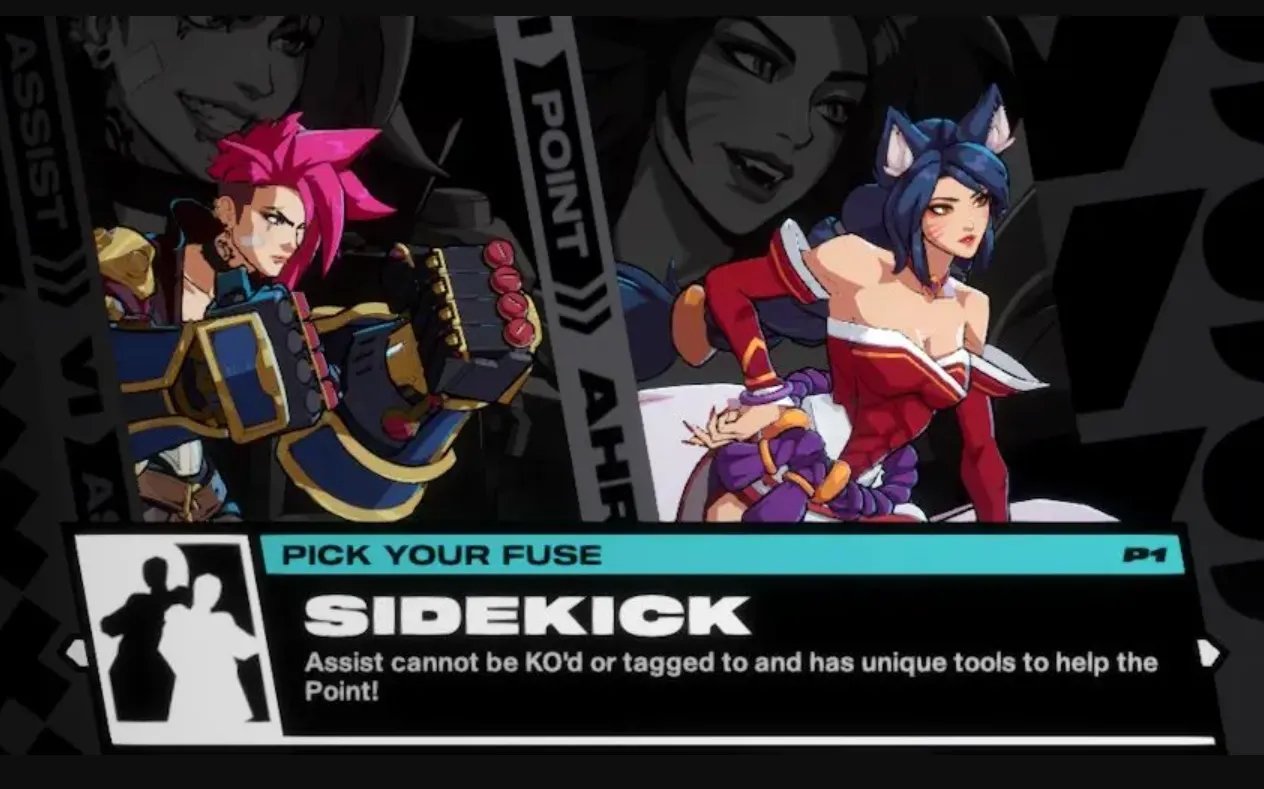Sidekick flips 2XKO’s tag fighter rhythm into a one‑pilot game plan. You stay on your point champion for the entire round; your partner never tags in. In exchange for giving up tag swaps and tag‑based launchers, you keep a full suite of assists and gain durability, meter headroom, and a couple of tools that reward precise timing and smart routing.
Sidekick at a glance
| Feature | How Sidekick changes it |
|---|---|
| Team control | Play one on‑screen champion for the round; your partner stays off‑screen and never swaps in. |
| Tags | No Quick Tag, no Handshake Tag, no Tag Launcher. |
| Assists you still have | Standard Assists, Super Assist, Push Assist, and Break remain available from the off‑screen partner. |
| Charged assist | Hold the assist button to send your partner moving across the screen, then release to fire their assist from a new position. |
| Supers synergy | Cancel your S1/S2 super into your partner’s S1/S2 super for extended routes or enders. |
| Meter | Start each round with 2 bars; maximum meter increases to 5 bars. |
| Durability | +20% max HP. While at 500 HP or lower, incoming damage is reduced by 25%. |
| Fury Break | Available from round start. |
| On‑hit damage reduction (“Reduce”) | Press L, M, or H exactly as you’re hit to shave damage; blue sparks confirm the timing. |
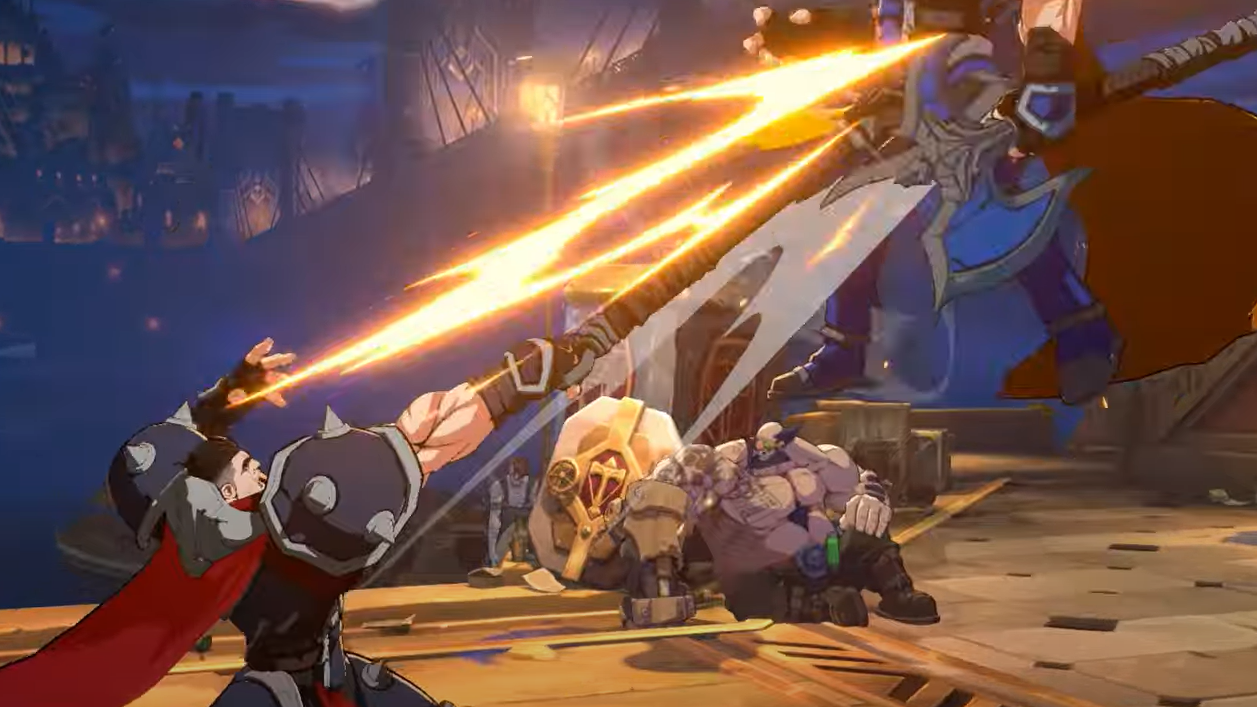
What you give up, what you keep
Sidekick removes the live swap mechanics that define most tag pressure: no Handshake Tag to steal turns, no Quick Tag to escape, and no Tag Launcher to open juggle routes. In return, your assist remains a constant off‑screen presence. You can still:
- Call standard Assists to cover space or extend hits.
- Spend meter on a Super Assist when it will cash out.
- Use Push Assist while blocking to create breathing room.
- Break to blow back pressure or end a combo string.
That trade pushes you toward stable, front‑loaded sequences and screen control backed by smart assist timing, rather than tag‑based vortexes.

Health and defense bonuses (and the 500 HP threshold)
Sidekick adds 20% to your maximum HP and layers a 25% damage reduction once your life drops to 500 HP or lower. There’s an important threshold nuance:
- The 25% reduction only applies at 500 HP and below. A hit that lands while you’re above 500 isn’t reduced, even if it knocks you under the line.
- Because of that, the “effective” extra survivability varies by the size of the hit that pushes you under 500. In practice, the net cushion ranges from roughly 0 to 167 HP depending on that transition hit’s damage.

Meter, supers, and how to route them
Two meter tweaks define Sidekick’s economy: you begin each round with 2 bars instead of 1, and your meter cap increases to 5 bars. That extra headroom pairs with a super‑to‑super cancel that’s specific to this fuse: after triggering your point champion’s S1 or S2, you can immediately flow into your assist champion’s S1 or S2.
Practically, that gives you three reliable uses:
- Secure kills without needing a live tag, by routing
S1→ partnerS1at the end of a juggle. - Fix spacing: use your partner’s super that reaches where your point’s finisher doesn’t.
- Threaten reversal into partner super on punishable whiffs when you’re sitting on meter.
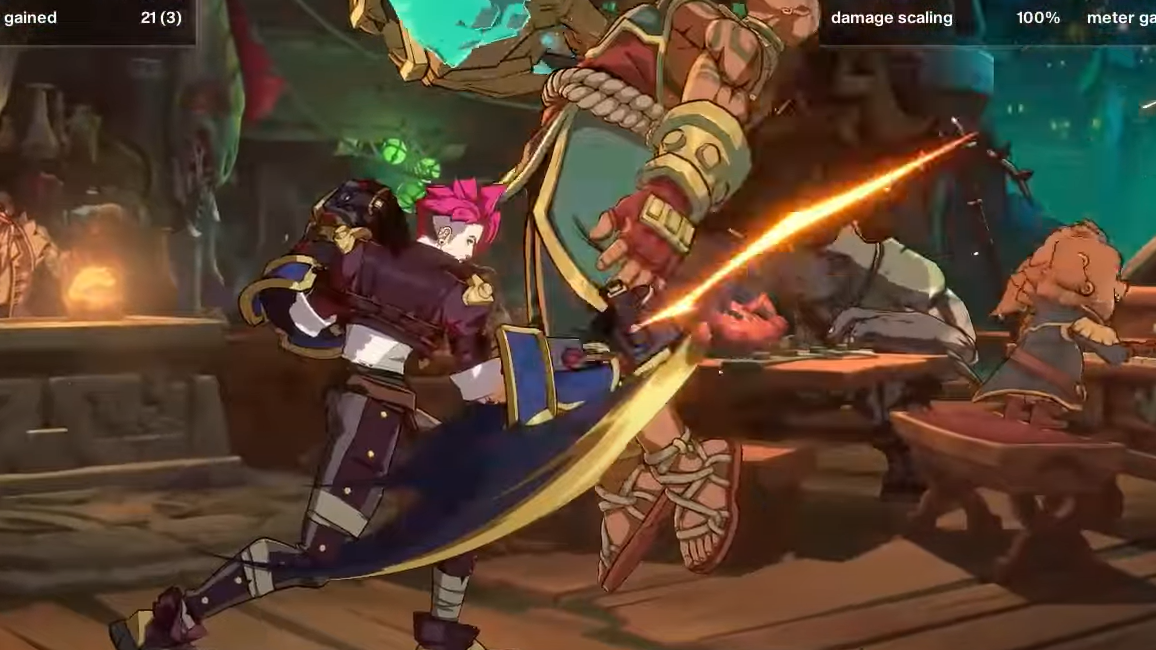
S1/S2 synergy and your team’s specific hit‑stop and launch heights.Assists under Sidekick: standard, super, push, and charged
You retain the assist toolkit—just never the swap. That means your best neutral sequences still lean on off‑screen coverage, with a Sidekick‑only wrinkle:
- Charged assist: hold the assist button to make your partner travel before acting, then release. This lets you “escort” your entry, chase backdashes, or reposition a setup without exposing your point.
- Super Assist: cash in meter when you’ve created true hits or chip sequences that justify the spend.
- Push Assist: while blocking, call your partner to shove the opponent off. Use it to reset space since you can’t Quick Tag out.
Because your assist never enters the stage, you always have access to these tools—budget your cooldowns and meter with that consistency in mind.
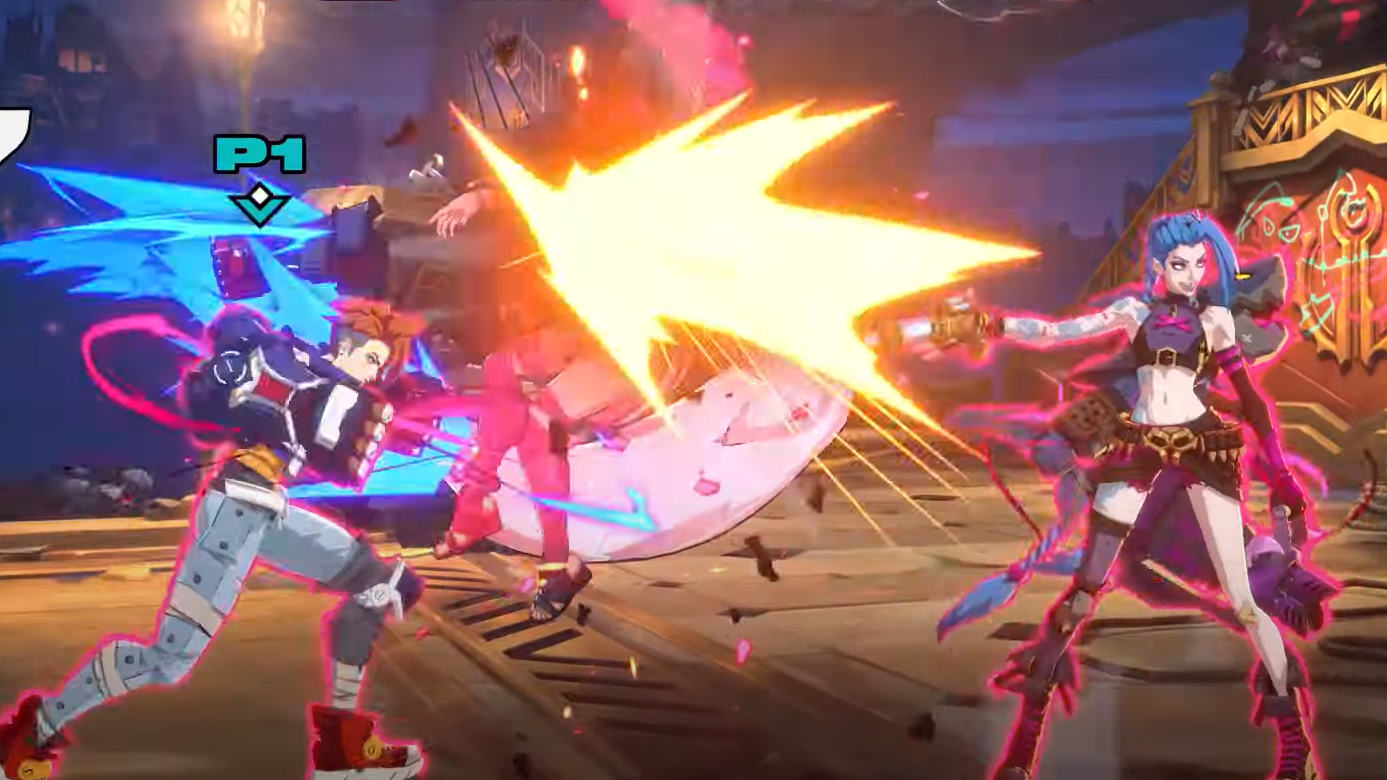
Timing “Reduce” to shave damage
Sidekick adds a reactive damage‑mitigation input. Tap L, M, or H exactly as a hit connects to reduce the damage of that hit; blue sparks around your character confirm a successful timing. A few practical notes:
- Pick one button and train your ear/eye on common multi‑hit strings so the timing becomes muscle memory.
- Prioritize high‑reward moments—big punish starters, meaty heavies, or the final hit of a super—where a well‑timed Reduce swings the round math.
Fury Break from round start
With Sidekick, Fury Break is available immediately at the start of each round. That gives you an early safety valve to halt pressure, force space, or convert a punish into momentum without waiting for a KO to unlock it. Combine that with Push Assist to reset the pace when your back hits the corner.
When Sidekick makes sense
- You want to pilot one character exclusively while still leveraging off‑screen support.
- Your team’s best routes don’t need Handshake Tag to be threatening, and your partner’s assists cover approach, anti‑air, or setplay.
- You value round‑start resources (2 bars, Fury Break) to stabilize early scrambles.
- You prefer consistent assist access over volatile tag mixups.
Sidekick is also a solid on‑ramp if you’re learning a new point: you can practice matchups and confirms without juggling swap timings, yet still play “team” neutral with assists and super‑to‑super enders.
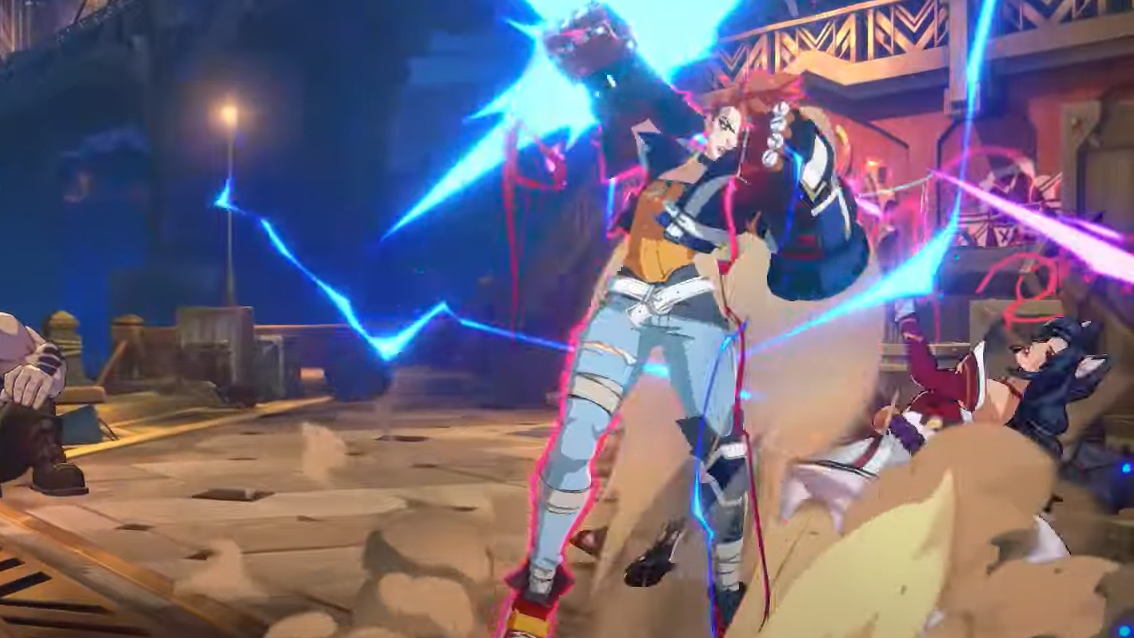
Practical examples you can try
- Metered cash‑out: confirm into a grounded
S1, cancel to your partner’s fastS1to finish before gravity drops them out. The extra bar at round start makes this live earlier than usual. - Screen escort: hold assist to send a forward‑moving partner across the stage, release to pin them with a hitbox, then advance behind it. It doubles as a safe meaty after throw.
- Low‑life scrambles: at ≤500 HP, your 25% reduction is active—Favor trades with armor or quick jabs that lead into Break, and look to Reduce the first hit of an opponent’s heavy punish.
- Threshold awareness: if you’re ~520 HP, block instead of challenging; eating a medium that pushes you under 500 without reduction can erase the benefit you were about to gain.
Sidekick vs. Juggernaut (quick contrast)
| Aspect | Sidekick | Juggernaut |
|---|---|---|
| On‑screen control | One point champion all round | One point champion; assist abilities removed |
| Assists | Yes (standard, Super, Push), plus charged assist | No assists; Break only |
| Durability/meter themes | +20% HP, 25% reduction ≤500 HP; start with 2 bars; max 5 | Similar durability/meter boosts; different super cancel and unique “Eject” mechanic |
| Super routing | Point S1/S2 into partner S1/S2 |
Self‑canceling supers and a distinct resource flow |
Both fuses lean into solo play. Sidekick keeps the off‑screen tools and team identity; Juggernaut goes all in on a single character’s kit. Choose based on whether you want constant assist presence or raw solo dominance.
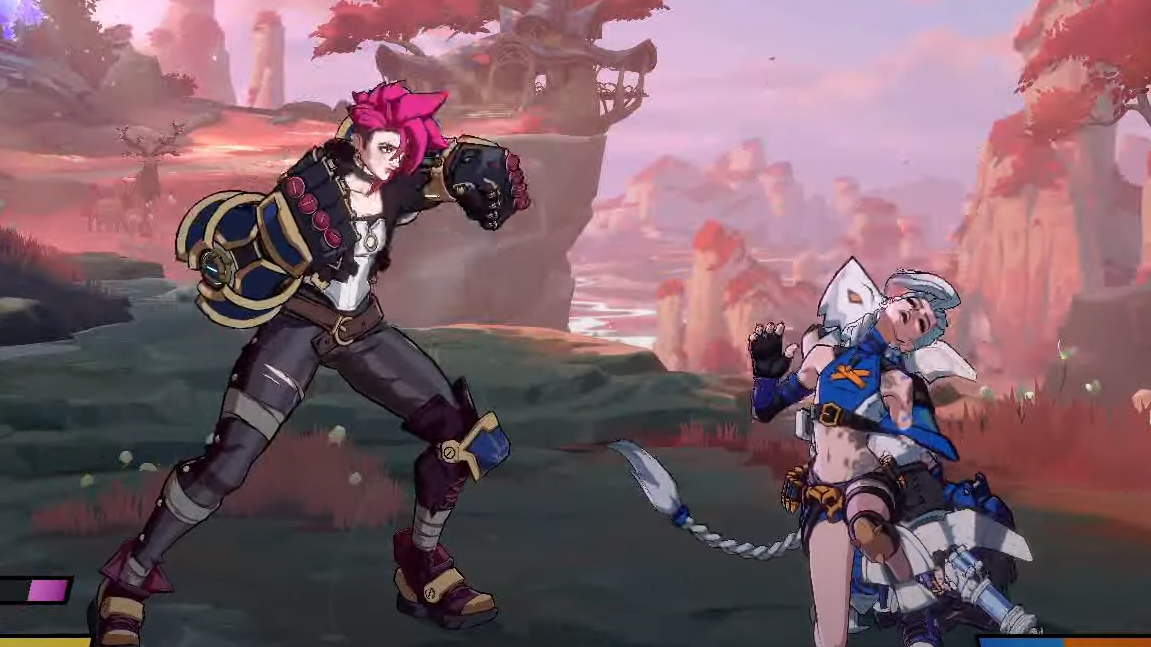
The headline with Sidekick is simple: you trade the flash of live tags for control and consistency. If your assists do real work on their own and your point’s confirms route cleanly into S1/S2, Sidekick gives you the resources and survivability to run your plan from bell to bell.

